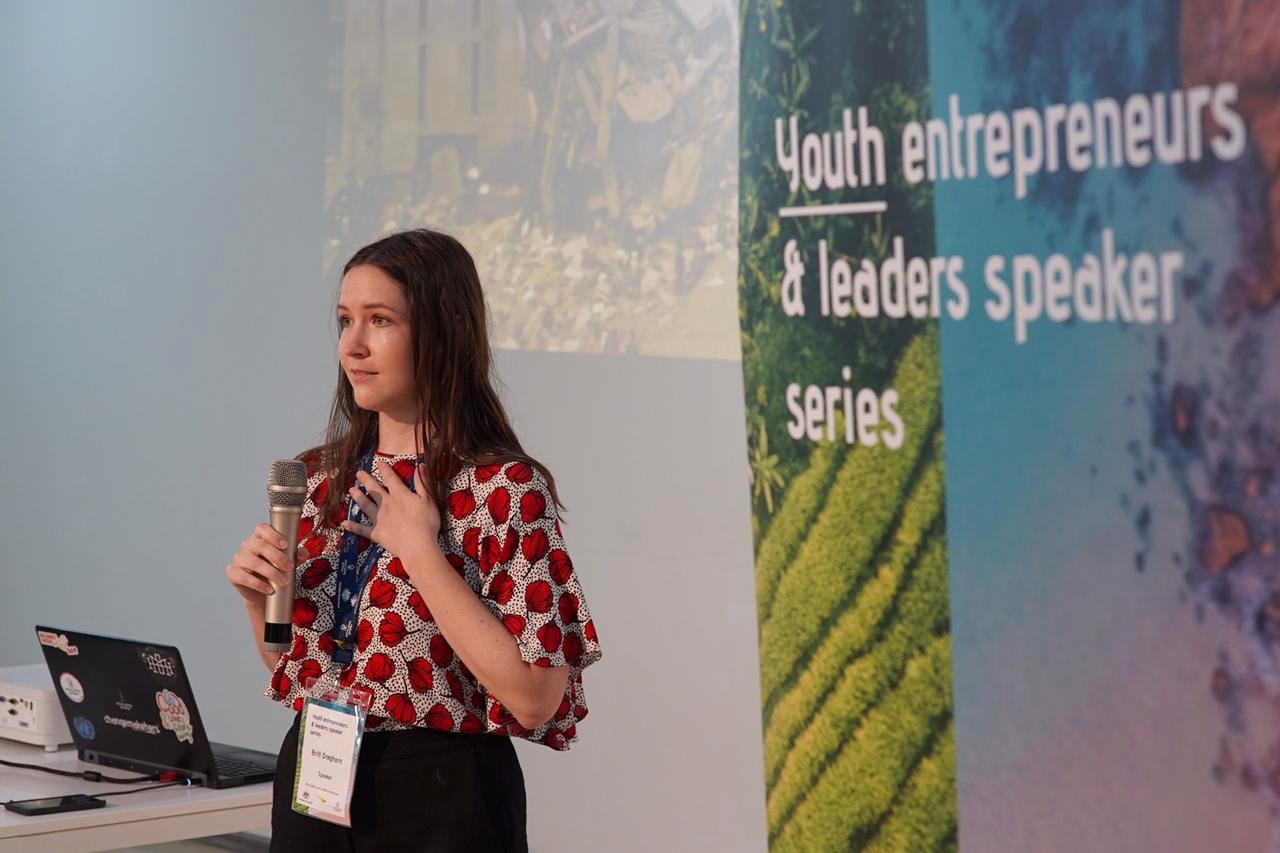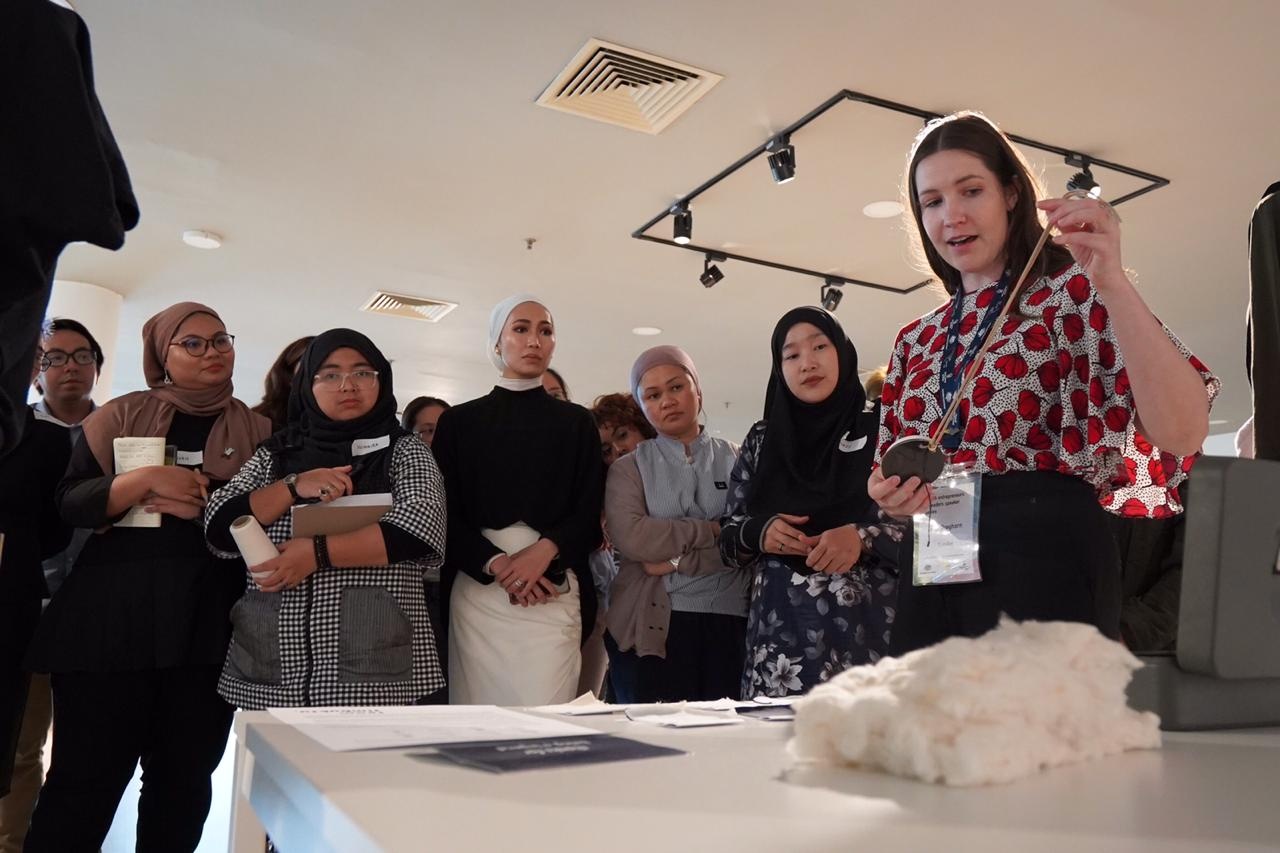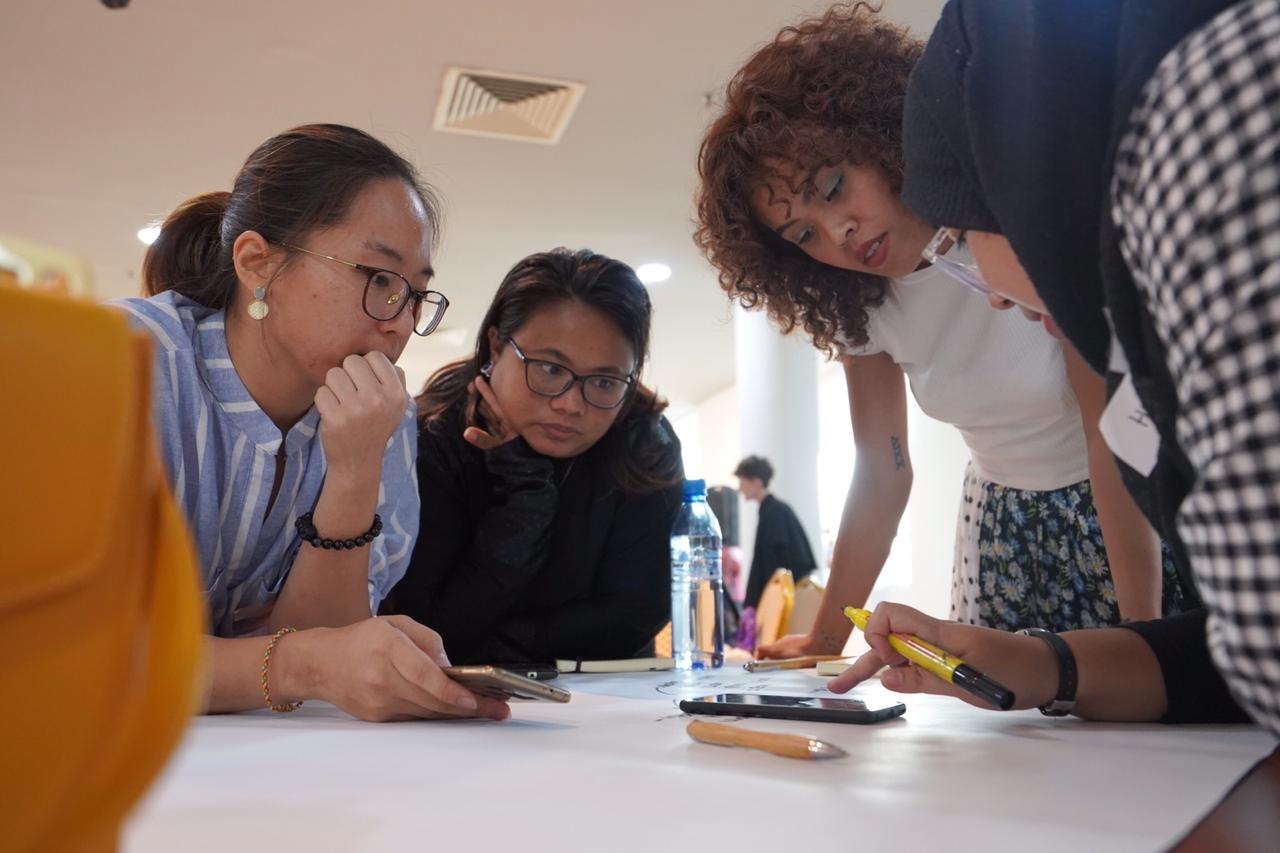
Bringing Ethical Fashion to Brunei
Brittanie Dreghorn, founder of sustainable fashion platform Britt’s List, was recently chosen to participate in the Australia Now ‘Youth Entrepreneur and Leader Speaker Series’ by creative agency Social Good Outpost in partnership with the Australian Government. Brittanie headed to Brunei – a tiny yet wealthy nation on the island of Borneo – to facilitate a number of workshops on sustainable fashion for young female entrepreneurs. Here, she shares her thoughts on the Brunei fashion scene…
It’s almost midnight when I arrive in Brunei for the first time in my life. I step out of the airport in my sleepy daze (it’s two am in Brisbane) and I’m hit with a wall of humidity that lingers on despite the sun’s disappearance many hours earlier. I’ve come to talk to local designers, students and industry folk about sustainable fashion, and specifically about some of the fantastic Australian brands in the space, as part of the Youth Entrepreneurs and Leaders Speaker Series.
On my first day in Brunei, I’m introduced to a woman named Bob who runs a local kids’ fashion label. Bob started the label as a means to raise funds for environmental conservation, but she also wanted the label itself to be environmentally friendly. She hardly needs prompting to tell me the process of starting a label in Brunei. “It’s really hard,” she starts. “It’s hard to find fabrics made from natural fibres here, and even if you do, they aren’t labelled so it’s hard to know what’s what. I’ve imported some organic cotton myself but it’s difficult and expensive because it has to come through two ports to get here. One bolt of cotton cost double its value just to ship.” Bob talks to me at length about the fashion scene here in Brunei. She explains a deep lack of awareness for fabrics, with most people purchasing what they think is a silk but is almost always a synthetic fibre. “The shops here sell a fabric called Dubai silk, which is literally just polyester,” she says. “The problem is people feel it in the shops and it feels cool to touch and so they buy it, but in reality wearing a synthetic fabric like this in the extreme humidity and heat our climate offers is anything but cool.”
A lack of fabric awareness isn’t so surprising to me after I learn that garment labelling isn’t really a thing here. That is, there are no laws enforcing brands to include the contents of their clothing, washing advice or where the garments are made on the tags of their clothes. Bob takes me to see a local label’s store in the nearby mall to show me this in practice. I do my usual sweep inside the seams of the first garment I can find. Nothing. I check the brand label and swing tag to see where it’s made. Nothing. While transparency in my eyes is having detailed supply chain and cost information about your brand and sharing that with your customers, I’m realising something as simple as garment labelling is really the first step in that journey – something I’ve very much taken for granted.
Despite the challenges, there is a grassroots movement of budding fashion designers and changemakers happening in the industry. Brands like Bob’s are doing the tough work of importing or seeking out natural fibres. And with little choice when it comes to ethical manufacturing, they’re left with the task of making the clothes themselves too.
Mina Zaina is a part of this movement. She’s working on a social enterprise dedicated to combating growing textile waste that also serves as a platform to advocate for ethical fashion. “With Reracked, we collect and repurpose unwanted clothes, put them back on racks to resell and keep them out of landfill,” Mina shares. “When it comes to reducing the impact of existing clothing, this is the easiest option. Disposing of our clothes into landfill significantly affects the environment. What Reracked is trying to do is to loop the circular economy back to the ecosystem, prolonging the clothes’ lifetime, instead of the traditional linear economy where the product goes to landfill or is burned at the end of its life.” When it comes to getting locals on board, Mina says they’ve got work to do. “I think for us the challenge is to shift people’s mindset, to be more conscious about why they’re buying and to make purchases not just for the cost but also for the cause.”

The literacy of sustainability in the fashion industry is low among locals, however the desire to improve and grow the local industry is strong. When I present my workshop about the future of fashion, blank stares burn through me. This is as foreign to them as the white Australian girl standing in front of them. I run a number of sessions going into subjects such as the Oxfam What She Makes report that reveals garment workers in Bangladesh are paid as little as 39 cents an hour. I explain how fashion contributes about five percent of total global carbon emissions and how one garment can shed 1900 microfibres in every washing cycle.
I share some good news, too. I explain how Outland Denim is employing people affected by sex trafficking and paying them a living wage to make their garments. I share the story of Citizen Wolf – a Sydney brand combating textile waste by making custom casualwear to order. And I refer to brands such as NICO Underwear who are using recycled and sustainable materials for their garments.
By the end of the day, I have the designers in the room commit to labelling their garments as a first step in moving towards better transparency. Some share a desire to seek out more sustainable materials, while many in the room say they will start asking brands #WhoMadeMyClothes. It’s the start of a youth-led movement in Brunei to better fashion standards.

The Youth Entrepreneurs and Leaders Speaker Series by Social Good Outpost is part of Australia Now – an Australian Government public diplomacy initiative to celebrate and connect youth leaders across Australia and ASEAN in 2019/2020.

